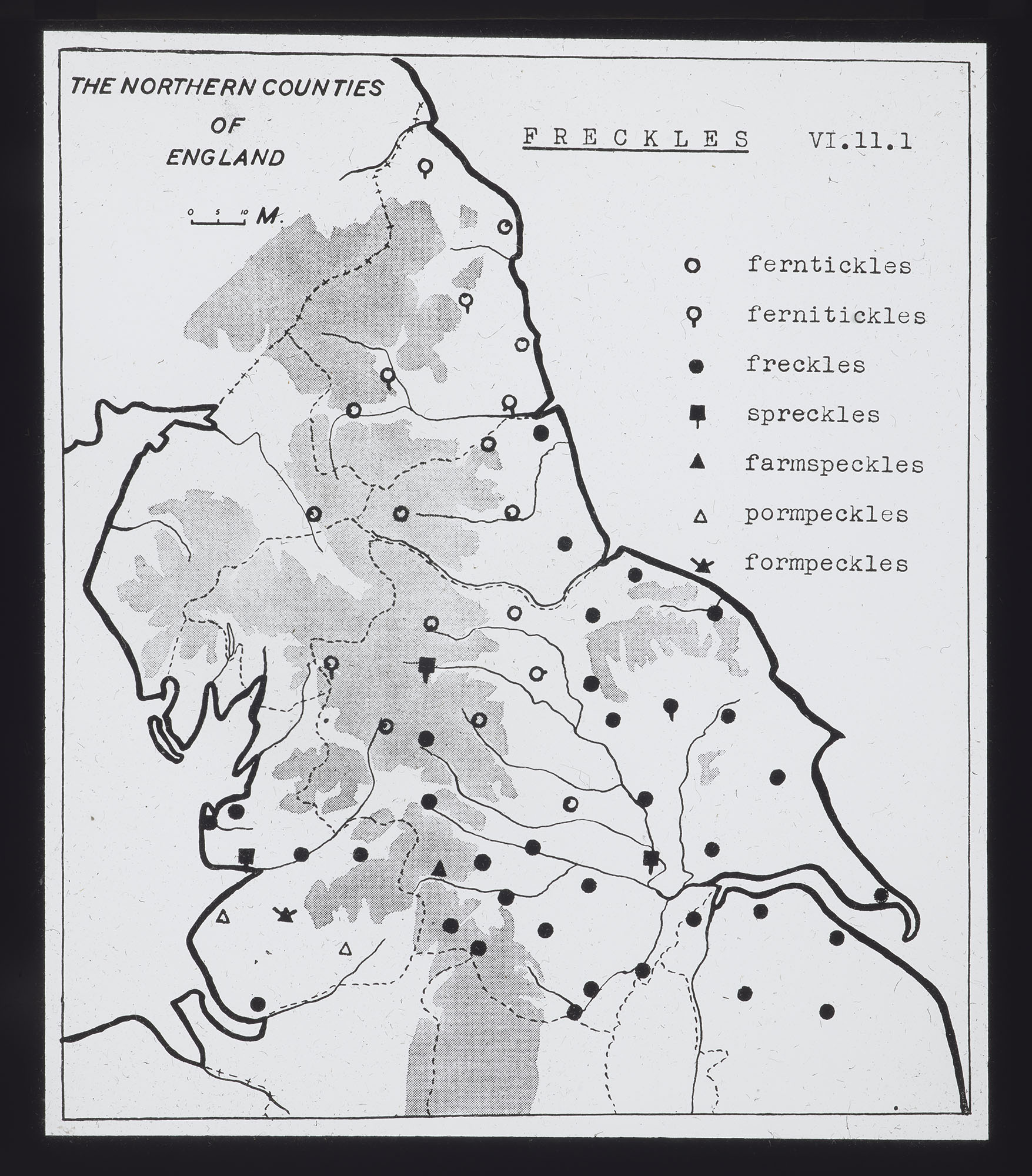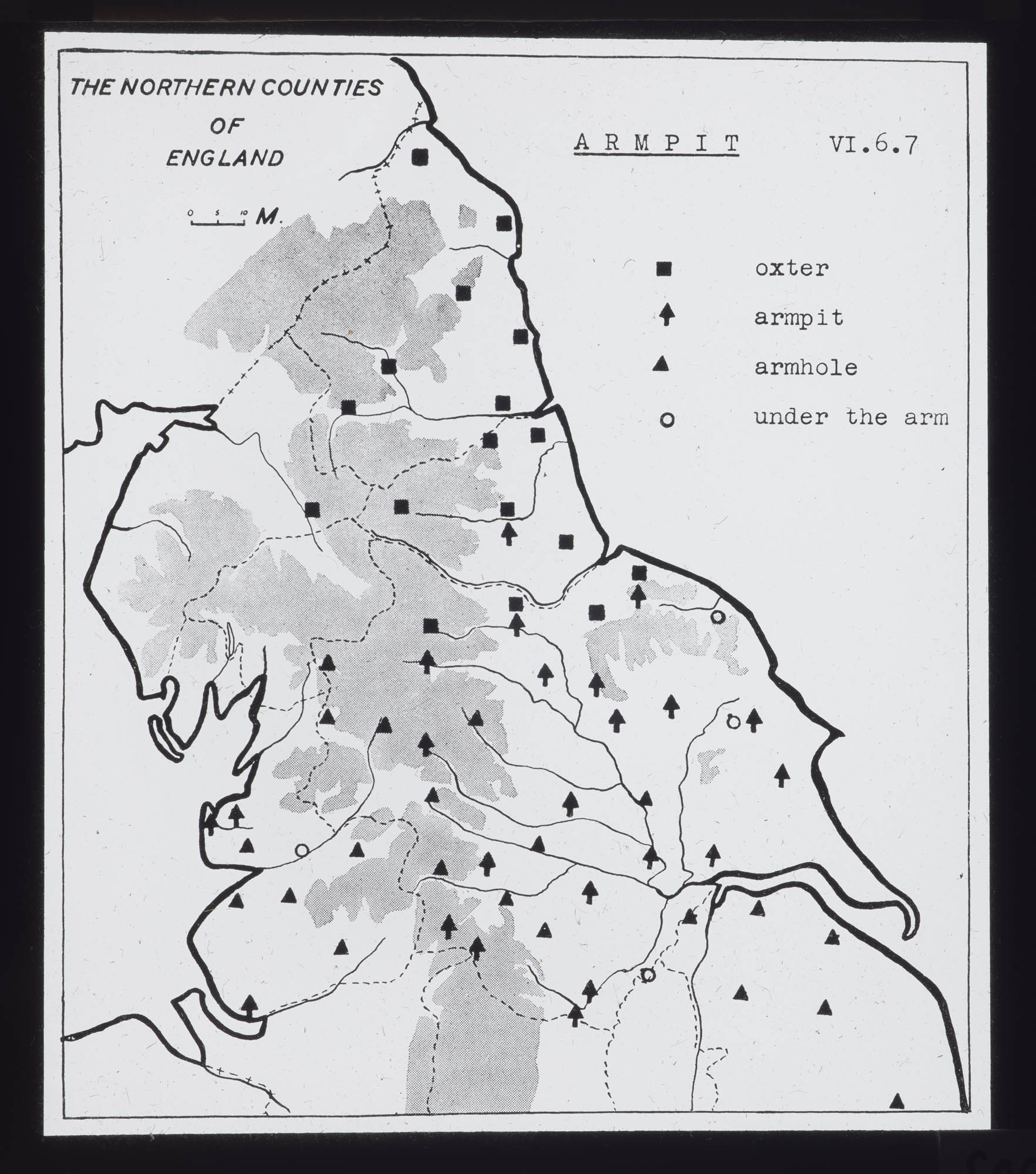The dialects of the North-East have been shaped by the region’s history and its geography. The proximity of the coast and the political border with Scotland to the north make this region both frontier and borderland.
Border control: Roman occupation and the arrival of Germanic languages (AD 100s-600s)
The Romans built Hadrian’s Wall (begun in 122 AD) to keep out the Scots and Picts from the north. You can still see impressive remnants of the wall and its forts. The disintegration of the Roman Empire in the early 5th century left a power vacuum in Britain. As early as AD 449, one of the Briton kings, Vortigern, is said to have invited Germanic warriors to come across to help keep the warlike Picts and Scots from taking over his kingdom. In the following centuries, more and more Germanic ‘invaders’ arrived and settled.
From the 5th to 7th centuries AD, three different Germanic tribes came across the North Sea and settled in parts of present-day Britain. The language they brought with them formed the basis of the earliest forms of English. The Jutes (who were the first to arrive) settled in Kent, the Saxons (from Saxony) settled in the South, and the Angles (from whom the name ‘England’ – literally ‘land of the Angles’, derives) settled in the north and middle of England. We sometimes call Old English ‘Anglo-Saxon’ after these Germanic peoples.
Viking raids: AD 700s-800s
Scandinavian raids on Britain in the 8th and 9th centuries had a massive impact on many parts of Britain. The monastery at Lindisfarne in Northumbria was sacked in 793, sending shockwaves through Europe. It was the first Viking raid in Britain – raids that would carry on for hundreds of years.
The Vikings brought their Old Norse language with them, and over time both they and their language became thoroughly intermixed with the local populations. However, place name evidence shows us that the North-East was much less affected and settled by Viking raiders than the areas to its north and south. The main areas of Viking influence (the Danelaw) stretched from the River Tees and Cumbria in the north down as far as East Anglia. Common place name elements like -by (e.g. Whitby), -thwaite (e.g. Husthwaite) and –thorpe (e.g. Swaythorpe) that are frequently found in places like Cumbria and Yorkshire are seldom found in Northumberland or Durham.
A shared language
Dialect does not observe physical or political boundaries. Situated close to the border with Scotland (established in 1237) in the northernmost reaches of England, the dialects of the North-East share many characteristics with others to the north (in southern Scotland) and south (Yorkshire). This is not surprising given both geographical proximity and their common origins in the Anglian dialects of Old English.
Some dialect words such as sneck (door latch) and flit (to move house; also moonlight flit – to move house by stealth and perhaps without paying your bills!) can be found all the way from Scotland to Yorkshire, and even beyond to parts of the midlands. Bairn for child, is found in the south-east of Scotland and in the north of England. Oxter meaning armpit is found both in the north of England (including the North-East) and in Scotland.
Bonny/bonnie meaning good looking is found on both sides of the border, as is canny, though whilst it means nice/easy-going in the North-East, it means shrewd or careful (especially with regard to finances!) in Scotland. Canny comes from the Old English verb cunnan (to know). This later developed into Middle English cunning (possessing knowledge/learned), before becoming our present-day word ‘cunning’ (where the meaning has changed to ‘crafty’ or ‘sly’).
Parts of the North-East also share accent features with their Scottish neighbours. For example, in both Newcastle and Scotland, words like ‘town’ and ‘house’ are pronounced with an ‘oo’ sound, as in ‘toon’ and ‘hoos’. This is where the nickname for Newcastle – the Toon – comes from!
These word maps show how words can be shared across borders and boundaries.




Proud to be different
Although some elements are shared across the Scottish/English border, people on either side have long been at pains to emphasise their linguistic and national differences.
There are also important borders within the North-East itself, and strong local senses of identity. To many outsiders, Geordie is a catch-all term for anyone from the North-East and their dialect, but if you ask anyone from Northumberland, Sunderland, Durham, Cleveland, Darlington or Wearside, you are likely to be met with vigorous explanations of difference. Geordies (people from Newcastle and Tyneside), Mackems (natives of Sunderland and Wearside) and Smoggies (those from Middlesbrough) are differentiated not only by geography, but also by pronunciation. ‘Town’ is ‘toon’ in Tyneside but not in Wearside. Words like ‘have’ and ‘hope’ are usually pronounced with an ‘h’ sound in Newcastle but often without one in Sunderland or in Middlesbrough. And Mackem is so-called because of a specific pronunciation of ‘make’ that is found in the local area.
The North-East’s maritime links and the varying fortunes of its traditional heavy industries have played their part in shaping the local varieties. Mackem tends to be associated with the ship-building industry – the saying ‘we mackem and you takem’ (we make them and you take them) is believed by many to be behind the nickname. The pollution that was supposedly given off by Middlebrough’s industrial works gave the Smoggies their name. Geordie is closely associated with mining. Pitmatic is the dialect associated with former mining areas in County Durham and to the north of Newcastle.
